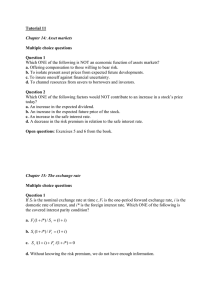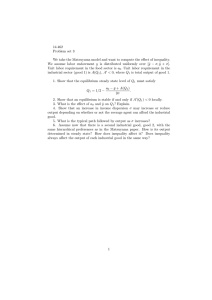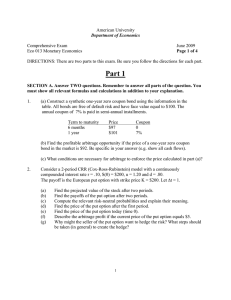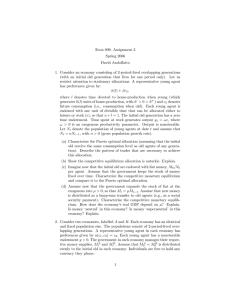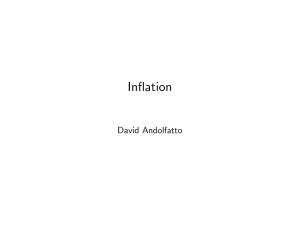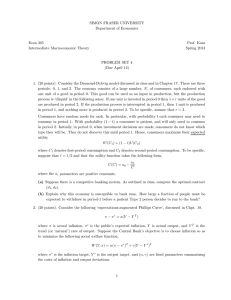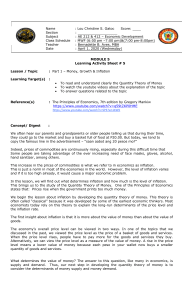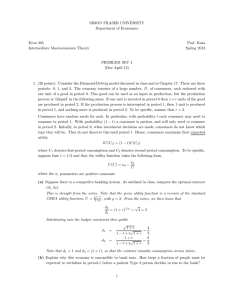Econ 410: Midterm 2 November 2, 2006 D. Andolfatto Name
advertisement
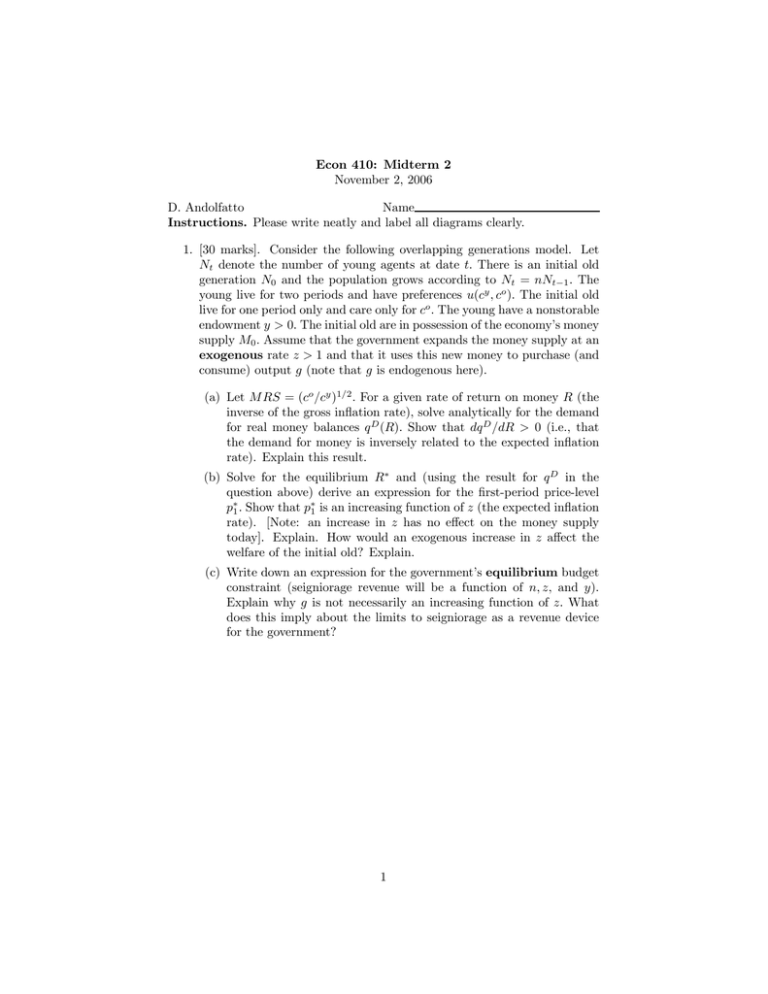
Econ 410: Midterm 2 November 2, 2006 D. Andolfatto Name Instructions. Please write neatly and label all diagrams clearly. 1. [30 marks]. Consider the following overlapping generations model. Let Nt denote the number of young agents at date t. There is an initial old generation N0 and the population grows according to Nt = nNt−1 . The young live for two periods and have preferences u(cy , co ). The initial old live for one period only and care only for co . The young have a nonstorable endowment y > 0. The initial old are in possession of the economy’s money supply M0 . Assume that the government expands the money supply at an exogenous rate z > 1 and that it uses this new money to purchase (and consume) output g (note that g is endogenous here). (a) Let M RS = (co /cy )1/2 . For a given rate of return on money R (the inverse of the gross inflation rate), solve analytically for the demand for real money balances q D (R). Show that dq D /dR > 0 (i.e., that the demand for money is inversely related to the expected inflation rate). Explain this result. (b) Solve for the equilibrium R∗ and (using the result for q D in the question above) derive an expression for the first-period price-level p∗1 . Show that p∗1 is an increasing function of z (the expected inflation rate). [Note: an increase in z has no effect on the money supply today]. Explain. How would an exogenous increase in z affect the welfare of the initial old? Explain. (c) Write down an expression for the government’s equilibrium budget constraint (seigniorage revenue will be a function of n, z, and y). Explain why g is not necessarily an increasing function of z. What does this imply about the limits to seigniorage as a revenue device for the government? 1
